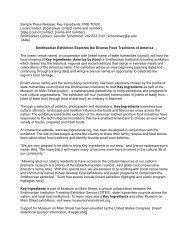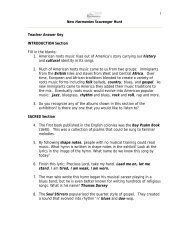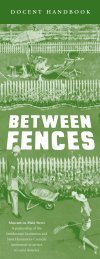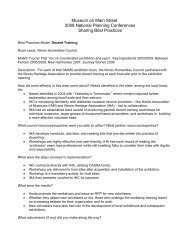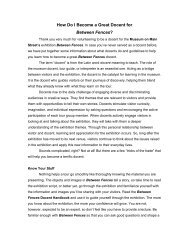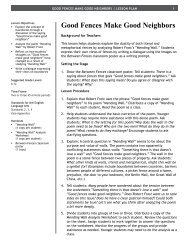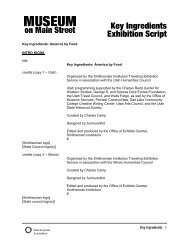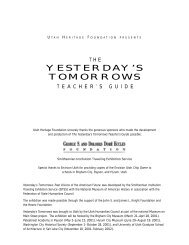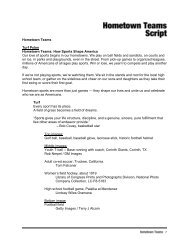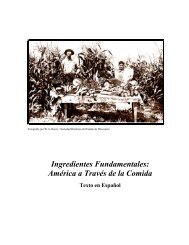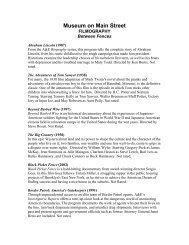Exhibition Script - Museum on Main Street
Exhibition Script - Museum on Main Street
Exhibition Script - Museum on Main Street
Create successful ePaper yourself
Turn your PDF publications into a flip-book with our unique Google optimized e-Paper software.
The Way We Worked scriptNuma Rousseve, ca. 1936.--Nati<strong>on</strong>al Archives, Harm<strong>on</strong> Foundati<strong>on</strong> Collecti<strong>on</strong>, Kenneth SpacePhotographs of the Activities of Southern Black AmericansThomas interview (2005)--from “Passing <strong>on</strong> the Legacy” by R<strong>on</strong> Bechet in Art / Visi<strong>on</strong> / Voice:Cultural C<strong>on</strong>versati<strong>on</strong>s in Community, Columbia College Chicago &Maryland Institute College of ArtTHE HUMAN VALUE“They laid off some of the fellas they hired last November. Why?Too many machines. Too much producti<strong>on</strong>. Ten years ago, if westraightened twelve thousand feet of half-inch or three-quarter-inch stock,it was a good night’s work. Now, we got to straighten forty-five thousand.“Some fellas will try to tell you that these machines make work. They givework to the lads that make ’em. All right. But for every <strong>on</strong>e [worker],[machines] throw ten out of work.”--Joseph Phillips, night shift worker in a Waterbury, C<strong>on</strong>necticut brassmill in the 1930sMilli<strong>on</strong>s of Americans know the pain of losing a job because of a badec<strong>on</strong>omy, factory closures, or being replaced by a machine. When theGreat Depressi<strong>on</strong> hit America in the 1930s, up to 25% of workers losttheir jobs.Unemployed men outside a Depressi<strong>on</strong> soup kitchen owned by AlCap<strong>on</strong>e, Chicago, Illinois, February 1931.--Nati<strong>on</strong>al Archives, Records of the U.S. Informati<strong>on</strong> AgencyPhillips interview (20 January 1939)--from Federal Writers’ Project interview by Francis D<strong>on</strong>ovan, Libraryof C<strong>on</strong>gress.A LIFE’S CALLING“I never had any sense in making a career out of [photography]. It wasmore a sense of pers<strong>on</strong>al commitment . . . . I felt myself more like acipher, a pers<strong>on</strong> that can be used for lots of things, and I like that . . . .”--Dorothea Lange, lifel<strong>on</strong>g documentarian who captured some of themost powerful images of mid-century American lifeWorking as an artist, Stella “Texas” Elmendorf Tylor traveled the country.She was born in Texas, went to art school in New York City, worked inIllinois, and exhibited works across America. She worked into her 90s.Stella Elmendorf Tylor, ca. 1910.--Archives of American Art, Smiths<strong>on</strong>ian Instituti<strong>on</strong>, Gift of PaulVanderbilt41



